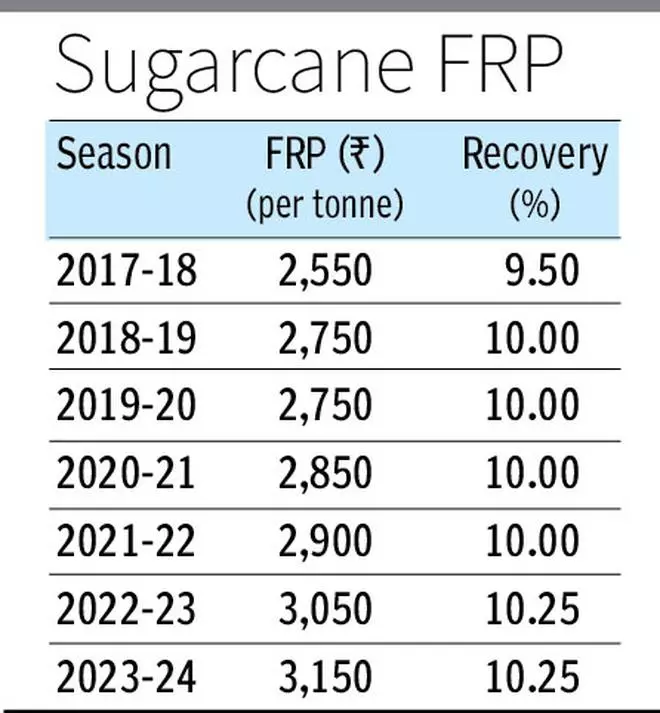The Centre on Wednesday announced a slew of measures for the farm sector, including a ₹3.70-lakh crore comprehensive package and the much-awaited raise in fair and remunerative prices (FRP) for sugarcane.
Announcing the decisions taken by the Cabinet Committee on Economic Affairs (CCEA), Information & Broadcasting Minister Anurag Singh Thakur said the FRP of sugarcane for season 2023-24 (October to September) will be ₹315/quintal for a basic recovery rate of 10.25 per cent. Earlier, it was ₹310/qtl. “This decision will benefit 5 crore sugarcane farmers, as well as 5 lakh workers employed in sugar mills and related ancillary activities,” the Minister said.


The Cabinet also approved the provision of a premium of ₹3.07/qtl for every 0.1 per cent increase in recovery over 10.25 per cent and a reduction of ₹3.07/qtl in FRP for every 0.1 per cent decrease in recovery.
Farm sector package
Under the comprehensive package, the CCEA approved continuation of the Urea Subsidy Scheme to ensure constant availability of urea to farmers at the same price of ₹242 for 45 kg bag, excluding taxes and neem coating charges. Of this, ₹3.69-lakh crore has been committed for urea subsidy for three years (2022-23 to 2024-25). This is apart from the recently approved nutrient-based subsidy of ₹38,000 crore for the 2023-24 kharif season.
Also read: CACP moots ₹10/quintal hike in sugarcane FRP for 2023-24
The package also includes ₹1,451.84 crore outlay under market development assistance (MDA) for promoting organic fertilisers from ‘gobardhan plants’.
The Cabinet also gave its nod for the PM Programme for Restoration, Awareness Generation, Nourishment and Amelioration of Mother — Earth (PM PRANAM) in order to encourage balanced use of chemical fertilisers. Fertiliser Minister Mansukh Mandaviya said with this scheme, the Centre expects ₹20,000 crore savings, of which States will get ₹10,000 crore as incentive.
Mandaviya also announced the introduction of sulphur-coated urea or ‘urea gold’ to address sulphur deficiency in soil and save farmers’ input costs. The price of such urea will be higher, but even in less quantity, it will be useful at par with conventional urea, the Minister said.





Comments
Comments have to be in English, and in full sentences. They cannot be abusive or personal. Please abide by our community guidelines for posting your comments.
We have migrated to a new commenting platform. If you are already a registered user of TheHindu Businessline and logged in, you may continue to engage with our articles. If you do not have an account please register and login to post comments. Users can access their older comments by logging into their accounts on Vuukle.